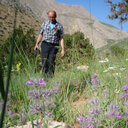Botanical Provenance of Traditional Medicines From Carpathian Mountains at the Ukrainian-Polish Border.
Keywords
Abstract
Plants were an essential part of foraging for food and health, and for centuries remained the only medicines available to people from the remote mountain regions. Their correct botanical provenance is an essential basis for understanding the ethnic cultures, as well as for chemical identification of the novel bioactive molecules with therapeutic effects. This work describes the use of herbal medicines in the Beskid mountain ranges located south of Krakow and Lviv, two influential medieval centers of apothecary tradition in the region. Local botanical remedies shared by Boyko, Lemko, and Gorale ethnic groups were a part of the medieval European system of medicine, used according to their Dioscoridean and Galenic qualities. Within the context of ethnic plant medicine and botanical classification, this review identified strong preferences for local use of St John's-wort (Hypericum perforatum L.), wormwood (Artemisia absinthium L.), garlic (Allium sativum L.), gentian (Gentiana lutea L.), lovage (Levisticum officinale W.D.J. Koch), and lesser periwinkle (Vinca minor L.). While Ukrainian ethnic groups favored the use of guilder-rose (Viburnum opulus L.) and yarrow (Achillea millefolium L.), Polish inhabitants especially valued angelica (Angelica archangelica L.) and carline thistle (Carlina acaulis L.). The region also holds a strong potential for collection, cultivation, and manufacture of medicinal plants and plant-based natural specialty ingredients for the food, health and cosmetic industries, in part due to high degree of biodiversity and ecological preservation. Many of these products, including whole food nutritional supplements, will soon complement conventional medicines in prevention and treatment of diseases, while adding value to agriculture and local economies.


